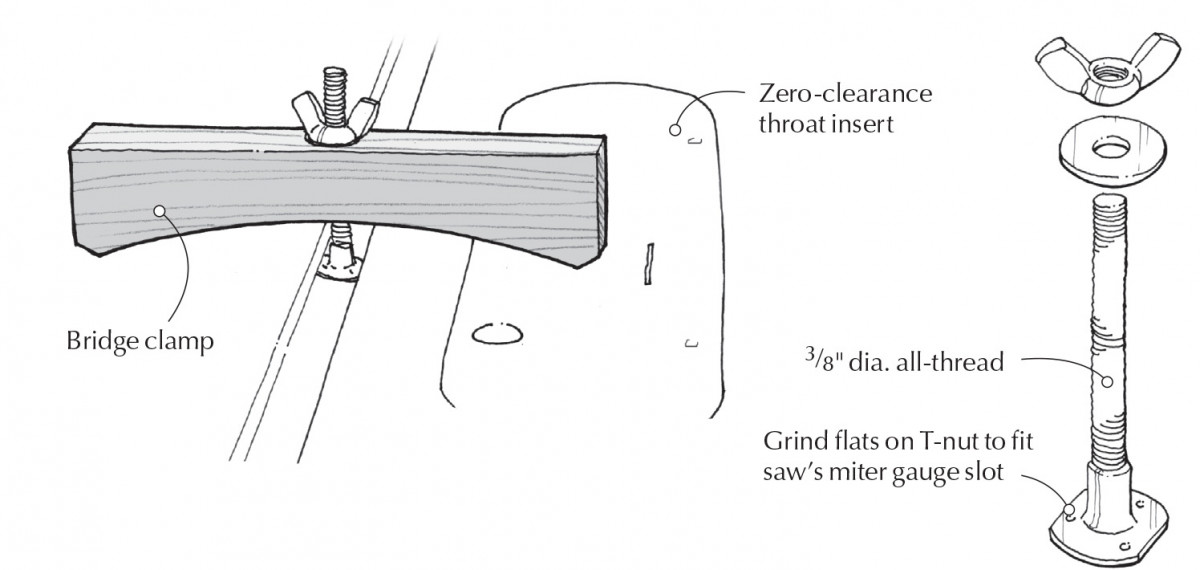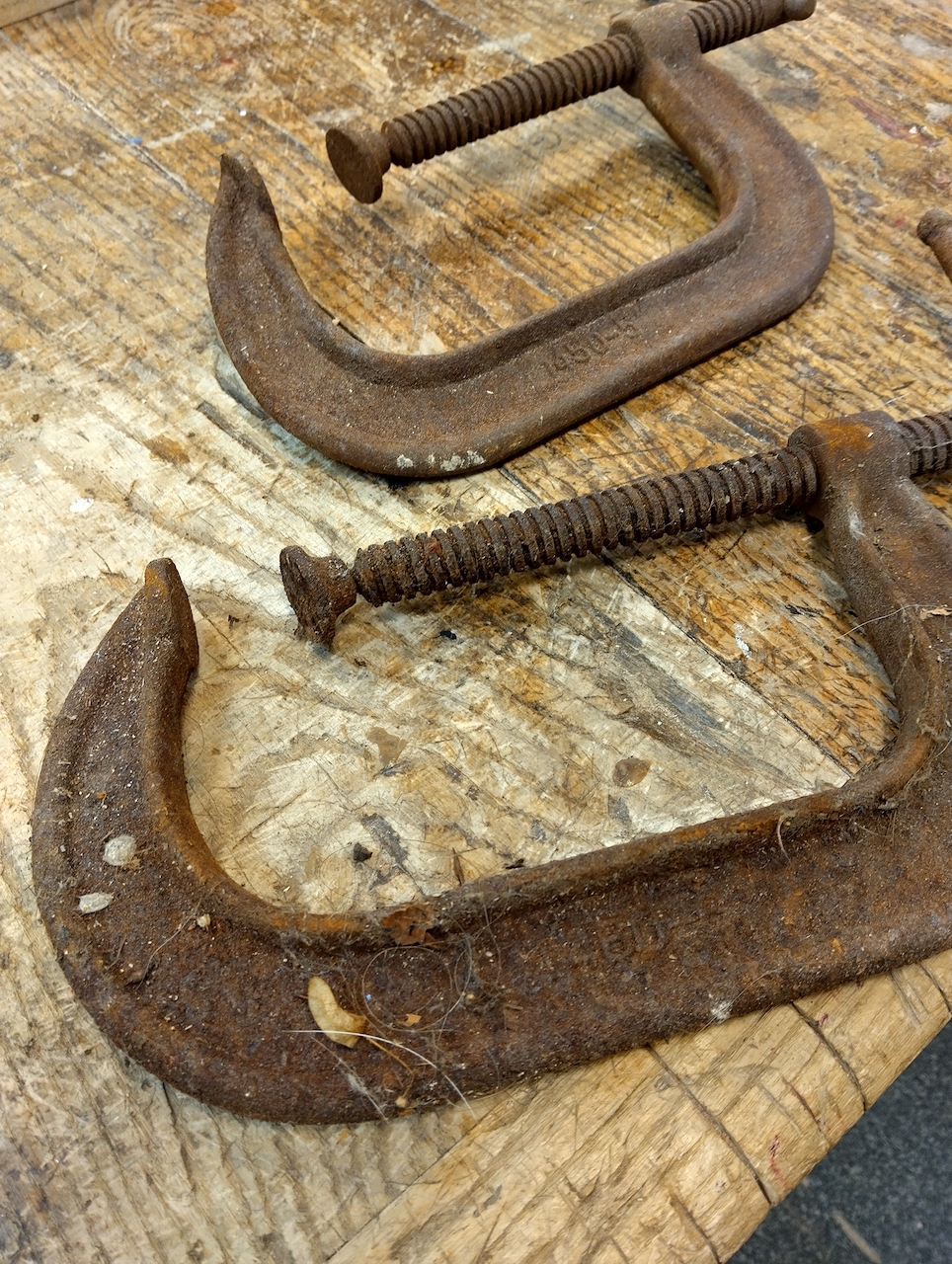We may receive a commission when you use our affiliate links. However, this does not impact our recommendations.

This high-quality Cincinnati Tool Co. clamp came to my possession padless. But with the help of a replacement pad, I was able to completely rehabilitate it.
Last week I showed how to source and install a missing swivel pad over the ball of a clamp’s screw. That kind of pad only works in a ball and socket situation, so what can we do with clamps that don’t have a ball at the end of the screw?
Many small clamps and mounting clamps have a pad that is installed over the thread-less end of the screw. Then, via pressure of a press, the screw’s stem is flared or mushroomed out to prevent the pad from detaching. Over time the flared metal can break off – which leads to the detachment of the pad and often to its disappearing. Luckily, I think that I found a readymade remedy that will fix this issue.
Not so long I have had an old US-made forged steel c-clamp that came to my possession pad-less. I did not want to let it go to the metal recycling bin so I decided to find something that could fix it.
While combing through the good old McMaster Carr catalog I discover a swiveled pad that can be screwed over the end of a screw and act as the perfect pad replacement. In fact, it looked like a much more robust pad than the original one. The McMaster product line includes a few optional pads, smooth sole, corrugated, and plastic one. I decided to get the smoothed sole pad but before ordering it I had to check for the type of thread on my clamp’s screw – as those replacement pads vary also in their thread configuration. To check for the type of thread on my clamp I used my thread identifier – a tool that I really recommend every woodworker will own. With that info in hand, I went ahead and ordered the pad.


The replacement pads come in many thread types which are common to many small and medium size clamps.
Installing the new pad
I turned and tightened the clamp’s screw against the clamp’s feet and with a hack saw I removed the thread-less end of the screw.


Then I filed and added a chamfer to the cut-off area.
 I threaded the new pad on and tightened it. Lastly, I oiled the ball and socket before reintroduced it to my fleet of clamps.
I threaded the new pad on and tightened it. Lastly, I oiled the ball and socket before reintroduced it to my fleet of clamps.
 The clamp works like a charm and will serve me for decades to come. I know that the price of a new pad is not cheap, but this product is well built and completely rehabilitated an old woodworking tool, so in my calculation it was totally worth it.
The clamp works like a charm and will serve me for decades to come. I know that the price of a new pad is not cheap, but this product is well built and completely rehabilitated an old woodworking tool, so in my calculation it was totally worth it.
Here are some supplies and tools we find essential in our everyday work around the shop. We may receive a commission from sales referred by our links; however, we have carefully selected these products for their usefulness and quality.












